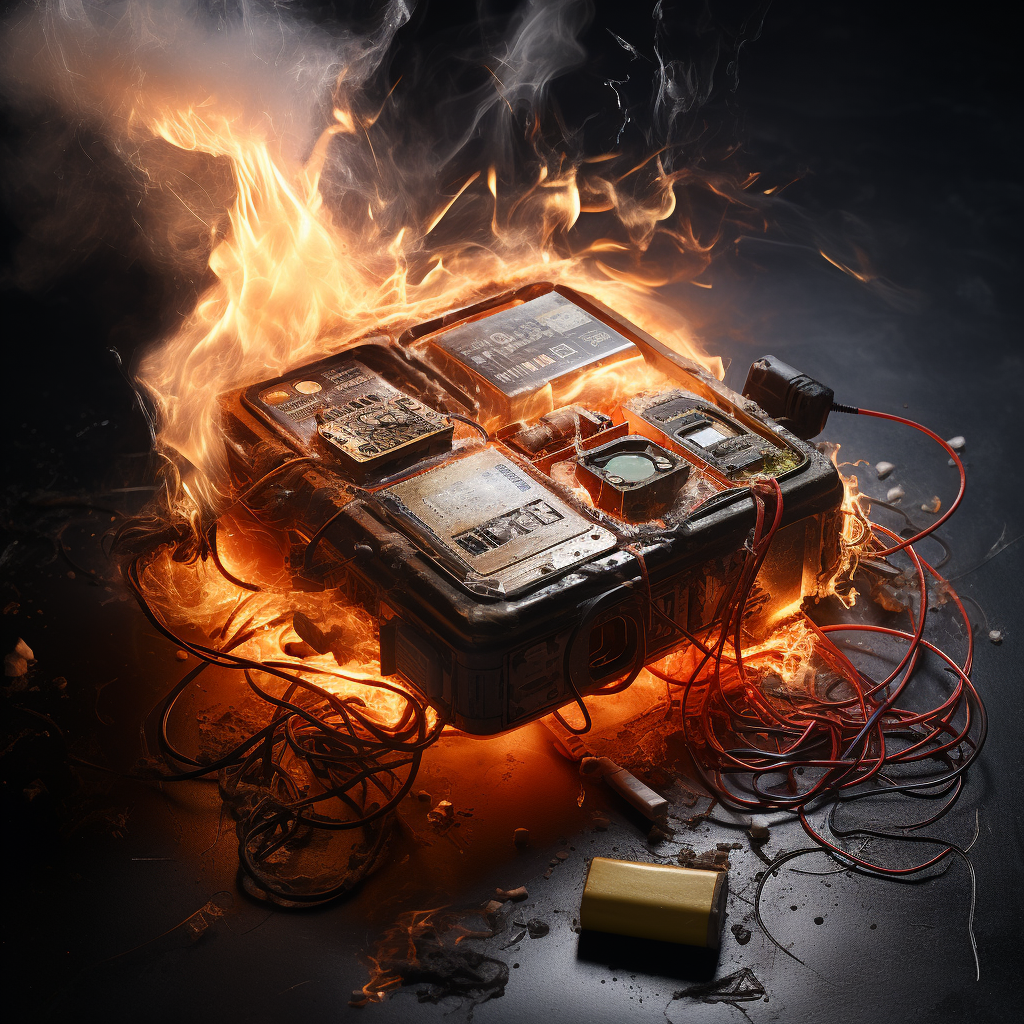Contents
- 1 The Basics of Batteries: A Quick Refresher
- 2 What Does “Sulfation” Mean?
- 3 Causes of Battery Sulfation
- 4 Symptoms and Detection of a Sulfated Battery
- 5 The Implications: Why Sulfation is a Problem
- 6 Methods to Prevent and Reverse Sulfation
- 7 The Future: Research and Developments in Battery Health
- 8 Conclusion and Best Practices for Battery Maintenance
For most people, a battery is simply a device that stores energy, ready to be used when needed. Whether in our cars, phones, or numerous other devices, we rely on batteries daily. However, like all technological marvels, batteries are not immune to issues. One of the most common problems that plague lead-acid batteries, like those found in vehicles, is sulfation. This phenomenon, if left unchecked, can severely impact battery performance and longevity. But what exactly is a sulfated battery, and why should the average consumer be concerned? This article aims to unravel the intricacies of battery sulfation, providing insights into its causes, effects, and the methods available to counteract it. For those seeking to optimize the lifespan of their batteries, understanding sulfation is key.
The Basics of Batteries: A Quick Refresher
Batteries, at their core, function through a series of chemical reactions. These reactions enable the conversion of chemical energy into electrical energy, providing power to our devices. There are various types of batteries available, but for the purpose of this article, we’ll primarily focus on lead-acid batteries.
A lead-acid battery is constructed from several cells. Each cell contains lead dioxide (PbO2) as the positive plate, sponge lead (Pb) as the negative plate, and an electrolyte solution of sulfuric acid (H2SO4). When the battery discharges, the lead dioxide and sponge lead react with the sulfuric acid to produce lead sulfate (PbSO4) and water. Conversely, when the battery charges, this process is reversed.
This continual cycle of charging and discharging is not without its inefficiencies. Over time, certain by-products may accumulate, and some chemical reactions might not fully reverse. One of these inefficiencies results in what we refer to as “sulfation.”

What Does “Sulfation” Mean?
Sulfation is the process wherein lead sulfate crystals accumulate on the battery plates. Initially, during the standard charging and discharging cycle, these crystals are minute and soft. They easily dissolve back into the electrolyte solution during the charging process. However, if a battery is left in a discharged state for extended periods or isn’t adequately charged, these crystals can harden and become stubbornly attached to the plates.
This thick crystalline layer becomes an insulator, impeding the battery’s ability to charge or discharge efficiently. As more and more of the plate area gets covered, the battery’s capacity reduces, and it can no longer hold or deliver as much power as before.
Causes of Battery Sulfation
Sulfation is an inherent part of the lead-acid battery’s discharge cycle, but under normal circumstances, it is reversible. However, certain conditions accelerate the buildup of hard-to-reverse sulfates. Here are the primary culprits:
- Extended Discharge: Batteries that remain in a discharged state for extended periods are more susceptible. This could be due to an infrequently used vehicle or a stored battery that isn’t periodically charged.
- Incomplete Charging: If a battery repeatedly receives insufficient charge, the soft lead sulfate crystals don’t get an opportunity to dissolve back. Over time, these crystals harden, leading to sulfation.
- Age: As with most things, batteries wear out over time. Older batteries have a higher likelihood of developing hard sulfates.
- Excessive Heat: Batteries exposed to prolonged high temperatures can experience accelerated sulfation. Heat speeds up chemical reactions and can cause the electrolyte solution to evaporate, concentrating the acid.
- Low Electrolyte Levels: The electrolyte solution plays a crucial role in the battery’s function. If it drops below the plates because of leakage or evaporation, portions of the plates get exposed, increasing the chances of sulfation.

Symptoms and Detection of a Sulfated Battery
Identifying a sulfated battery early can help in taking corrective measures. Some common signs include:
- Reduced Capacity: The battery may not hold a charge as long as it used to or might die more quickly under load.
- Sluggish Cranking: In vehicles, you might notice a slower engine crank when attempting to start.
- Dimming Lights: The battery might not deliver the necessary power to maintain the brightness of lights, be it in a vehicle or a battery-operated device.
- Swollen Battery Case: In extreme cases, the buildup can cause the battery case to expand.
- Voltage Drop: Using a multimeter, one can detect a drop in the battery’s voltage even after a full charge.
For an accurate diagnosis, specialized equipment like a conductance tester can be employed. These devices measure the battery’s ability to transmit current and can indicate sulfation levels.
The Implications: Why Sulfation is a Problem
The negative impacts of sulfation go beyond just reduced battery performance. Here’s a closer look at why it’s a pressing concern:
- Reduced Battery Lifespan: Constant sulfation can severely shorten a battery’s operational life. What could have served for years might only last a few months if sulfation is left unchecked.
- Increased Operational Costs: For businesses that rely heavily on batteries (like forklift operations or backup power systems), frequent replacements due to sulfation can lead to elevated expenses.
- Environmental Concerns: Disposed batteries contribute to environmental waste. A higher battery replacement rate means more potential pollutants if not recycled properly.
- Operational Inefficiency: In devices that rely on batteries for continuous operation, frequent battery failures or replacements can cause downtimes and hamper productivity.

Methods to Prevent and Reverse Sulfation
Addressing sulfation requires a two-pronged approach: prevention and reversal.
Prevention:
- Regular Charging: Ensure that your battery is charged regularly and adequately. Utilize smart chargers that can adjust the charging rate based on the battery’s state.
- Temperature Regulation: If possible, store batteries in a cool, dry place. Avoid exposing them to prolonged high temperatures.
- Regular Maintenance: For batteries that require maintenance, like some vehicle batteries, ensure the electrolyte levels are checked and maintained.
Reversal:
- Desulfation Chargers: These are specialized chargers that send high-frequency pulses to break down hard sulfate crystals.
- Equalizing Charge: This involves charging the battery at a higher than normal voltage (but within safe limits) to dissolve larger sulfate crystals. This should be done with caution and preferably under expert guidance.
- Battery Additives: Some commercial additives claim to reverse sulfation when added to the electrolyte solution. While they might offer temporary relief, their long-term effectiveness and safety are debated among experts.
It’s worth noting that while these methods can help in reversing mild to moderate sulfation, severely sulfated batteries might be beyond recovery and would need replacement.
The Future: Research and Developments in Battery Health
The realm of battery technology is constantly evolving. As our dependence on batteries grows, so does the emphasis on enhancing their lifespan and performance. Several groundbreaking research initiatives aim to tackle the sulfation problem head-on:
- Advanced Electrolyte Solutions: Scientists are experimenting with new electrolyte compositions that reduce the rate of sulfation or make it easier to reverse.
- Smart Battery Management Systems (BMS): Modern BMSs are more than just monitoring tools. They actively optimize charging and discharging cycles, ensuring that conditions favoring sulfation are minimized.
- Nano-technology: On the horizon are nanomaterials that can either prevent sulfate crystals from adhering to plates or help in breaking them down more efficiently.
- Alternative Battery Technologies: While lead-acid batteries dominate certain sectors due to their cost-effectiveness, other technologies like lithium-ion are becoming more prevalent. These batteries have their own sets of challenges, but sulfation isn’t one of them.
While these advancements promise a brighter future for battery health, it’s essential to remember that regular maintenance and informed usage practices remain crucial.
Conclusion and Best Practices for Battery Maintenance
Sulfation is an inherent challenge with lead-acid batteries, but with understanding and care, its impact can be mitigated. To sum up:
- Stay informed about the state of your battery. Regular checks and maintenance can ward off many potential issues.
- Invest in quality chargers that can adapt to your battery’s needs.
- Be cautious about where and how you store your batteries, especially if they won’t be in use for extended periods.
As we advance technologically, the nuances of battery care also evolve. But the core principle remains: a well-maintained battery is not only an economic asset but also an environmental imperative. By addressing issues like sulfation proactively, we can ensure that our batteries serve us longer, more efficiently, and more sustainably.



1 comment
[…] sections examine the specific manufacturing difficulties, the major players working on solid-state batteries, and opinions from experts on how to enable large-scale manufacturing. The article concludes with […]